 Miscellaneous
Miscellaneous  Miscellaneous
Miscellaneous  History
History 10 Huge Historical Events That Happened on Christmas Eve
 Music
Music 10 Surprising Origin Stories of Your Favorite Holiday Songs
 History
History 10 Less Than Jolly Events That Occurred on December 25
 Weird Stuff
Weird Stuff 10 Funny Ways That Researchers Overthink Christmas
 Politics
Politics 10 Political Scandals That Sent Crowds Into the Streets
 Weird Stuff
Weird Stuff Ten Bizarre Facts About The Doge Meme
 Our World
Our World 10 Ways Your Christmas Tree Is More Lit Than You Think
 Movies and TV
Movies and TV The 10 Coolest Stars to Set Sail on The Love Boat
 History
History 10 Things You Didn’t Know About the American National Anthem
 Miscellaneous
Miscellaneous Top 10 Things Crypto Was Supposed to Change & What Actually Did
 History
History 10 Huge Historical Events That Happened on Christmas Eve
 Music
Music 10 Surprising Origin Stories of Your Favorite Holiday Songs
Who's Behind Listverse?

Jamie Frater
Head Editor
Jamie founded Listverse due to an insatiable desire to share fascinating, obscure, and bizarre facts. He has been a guest speaker on numerous national radio and television stations and is a five time published author.
More About Us History
History 10 Less Than Jolly Events That Occurred on December 25
 Weird Stuff
Weird Stuff 10 Funny Ways That Researchers Overthink Christmas
 Politics
Politics 10 Political Scandals That Sent Crowds Into the Streets
 Weird Stuff
Weird Stuff Ten Bizarre Facts About The Doge Meme
 Our World
Our World 10 Ways Your Christmas Tree Is More Lit Than You Think
 Movies and TV
Movies and TV The 10 Coolest Stars to Set Sail on The Love Boat
 History
History 10 Things You Didn’t Know About the American National Anthem
10 Microorganisms And Pathogens That Are Used To Treat Other Diseases
It is weird to think that diseases can be used to cure other diseases. However, it is true. For centuries, scientists have figured out ways of using deadly, pathoegenic bacteria, viruses, and protozoa to cure deadly diseases caused by other pathogens.
It may seem counterintuitive to cure one illness with another, but it has worked time and time again. And it’s not always that scary. Other microorganisms, specifically viruses and bacteria that are not necessarily dangerous to humans, have also been utilized to treat lethal diseases.
10 Malaria
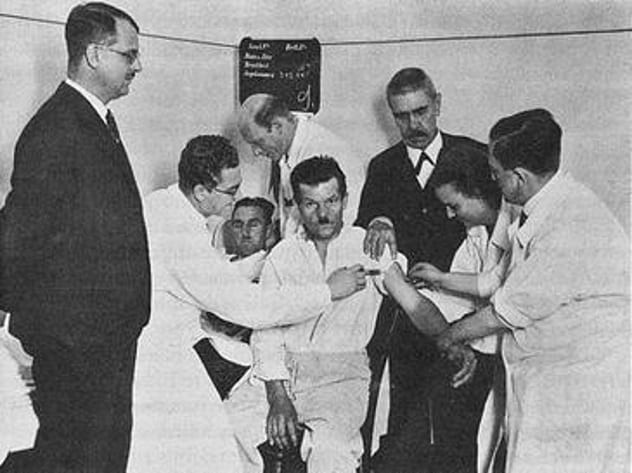
Syphilis was incurable throughout most of history and often led to death within four years. The worst form is neurosyphilis, which is infection of the nervous system by syphilis and often the final stage of the disease. Neurosyphilis is accompanied by blindness, madness, paralysis, and, subsequently, death. Most syphilis patients were confined to asylums until they died.
Austrian psychiatrist Dr. Julius Wagner-Jauregg started developing a treatment for syphilis in the 1880s. He turned to pyrotherapy—the artificial induction of a fever, in this case by the introduction of a more manageable pathogen. The high fever caused by the introduced infection kills off the incurable disease, and the curable disease is treated thereafter.
Dr. Wagner-Jauregg unsuccessfully tried using tuberculosis antigen as well as the typhus and typhoid vaccines to cure syphilis. However, he got his break in June 1917, when a wounded soldier suffering from malaria was sent to the psychiatric ward of the hospital where he worked. This was clearly an error because the soldier had no mental issues. But the doctor seized the opportunity to work on his pyrotherapy treatment for syphilis.
Dr. Wagner-Jauregg extracted blood from the soldier and injected it into nine people suffering from advanced syphilis. The malaria-causing Plasmodium protozoa caused a serious fever that killed off the syphilis-causing Treponema pallidum bacteria. Dr. Wagner-Jauregg went on to cure the six survivors—who now had malaria—with quinine.
Dr. Wagner-Jauregg published his findings in 1918. He noted that syphilis is killed when the body maintains a temperature of 41 degrees Celsius (106 °F) for six hours. His treatment soon became the method of choice for syphilis. However, it had its downsides, even though it was considered successful.
Syphilis patients often suffered from complications when they were injected with a different blood type. They also inherited the blood diseases of their donors. The deadly malaria strain used at the time could also cause anemia and kidney failure. Doctors later switched to the less deadly Plasmodium vivax strain. This method of treatment was abandoned after the advent of antibiotics.[1]
9 HIV
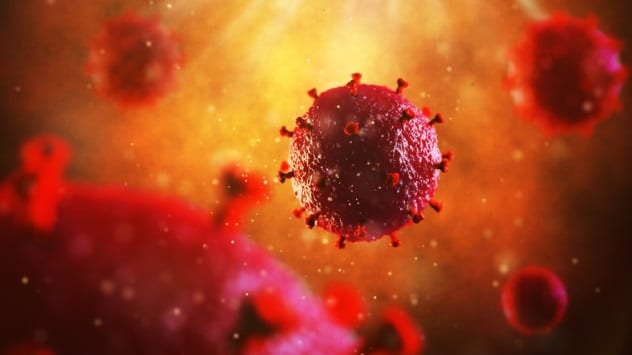
It is especially surprising that one of the world’s worst diseases can be used to treat other deadly ailments. Scientists have discovered a way to use HIV to cure leukodystrophy and Wiskott-Aldrich syndrome, two deadly diseases that often affect children.
To be clear, we do not use HIV itself but viral vectors created in part from HIV. A viral vector is used to deliver genetic material into cells, as in gene therapy. In 2010, a team of Italian doctors led by Dr. Luigi Naldini injected 16 children with HIV-based viral vectors. Six had Wiskott-Aldrich syndrome, while the other ten suffered from leukodystrophy.
Three years later, they observed that six of the children were slowly recovering from the diseases. Three suffered from Wiskott-Aldrich syndrome, and the other three suffered from leukodystrophy.[2] The other ten were also showing some signs of recovery. The procedure is inconclusive because it is still undergoing clinical trials.
8 Cancer
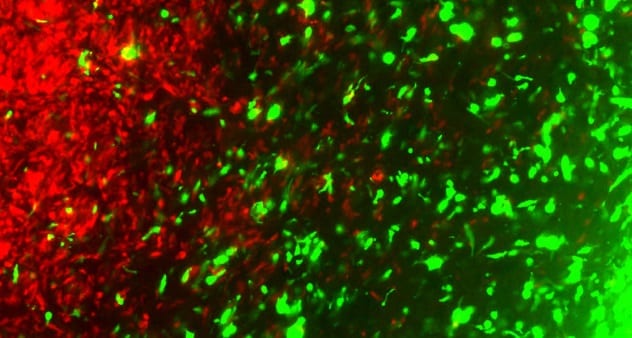
CRISPR (pronounced “crisper”) means “Clustered Regularly Interspaced Short Palindromic Repeats.” It is used in the CRISPR-Cas9 gene editing technology that allows scientists edit the DNA in cells.
While scientists concentrate on using CRISPR to modify unfavorable genes, researchers at the Rutgers Cancer Institute of New Jersey are trying to use it to cure cancer. CRISPR works for cancer treatment because cancerous cells roaming in the body tend to circulate back to the tumor they originated from.
Using CRISPR technology, researchers at the Rutgers Cancer Institute injected these cancerous cells with the cancer-killing S-TRAIL protein. The S-TRAIL-containing cancerous cells killed other cancerous cells in the tumors when they entered them. Then they essentially self-destructed thereafter. The technology has not been tested on humans, though, and experiments have been confined to mice.[4]
7 Cowpox
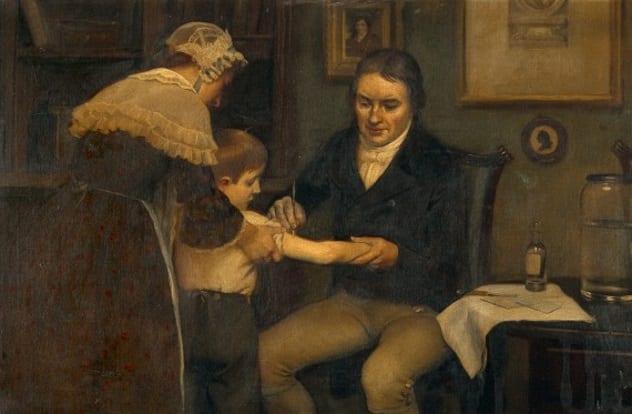
The cowpox virus was used to create the first vaccine for smallpox, a lethal virus that infected millions of people until it was declared eradicated in 1977. The cowpox vaccine is the reason vaccines are called vaccines. The name was derived from vaccinus, the Latin word for “cow.”
While we credit England’s Dr. Edward Jenner for creating the first smallpox vaccine, we know ancient Chinese and Middle Easterners deliberately infected themselves with cowpox to make themselves immune to the virus for centuries.
Dr. Jenner created the smallpox vaccine after observing that milkmaids never contracted smallpox. He later realized this was because they had been infected by cowpox—a closely related virus—from the cows they milked. Dr. Jenner proved his theory right in 1796, when he deliberately infected eight-year-old James Phipps with cowpox.
Dr. Jenner infected Phipps with smallpox a month and a half after infecting him with cowpox. Phipps never developed smallpox, indicating that he was immune to the virus. Dr. Jenner later published his findings. The smallpox vaccine which later eradicated the disease was derived from the vaccinia virus, another closely related virus.[4]
6 Poliovirus
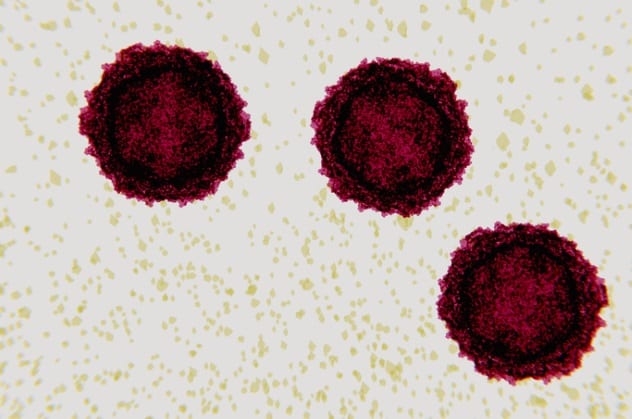
Poliovirus causes polio, which used to be one of the deadliest diseases out there. Fortunately, it is on the brink of extinction today. Only 22 incidents of polio were reported in 2017, which is a far cry from the 350,000 cases reported in 1988.
Interestingly, scientists are developing a method of using the once-deadly disease to cure glioblastoma (GBM), a rare but deadly and highly aggressive form of brain cancer. Glioblastoma is treated with surgery, radiation, and chemotherapy. However, it often returns and kills the patient within about a year.
The poliovirus therapy was developed by researchers from Duke Cancer Institute, Durham, North Carolina. They genetically modified the poliovirus to create a new virus called PVSRIPO, which is injected right into the brain tumors caused by glioblastoma.
A clinical trial conducted on 61 glioblastoma patients indicated a 21-percent survival rate. That seems small until we realize that patients given the standard treatments have a survival rate of just four percent.
While PVSRIPO looks promising, it could cause some unfavorable side effects depending on the location of the tumor in the brain.[5]
5 Bacteriophage Therapy
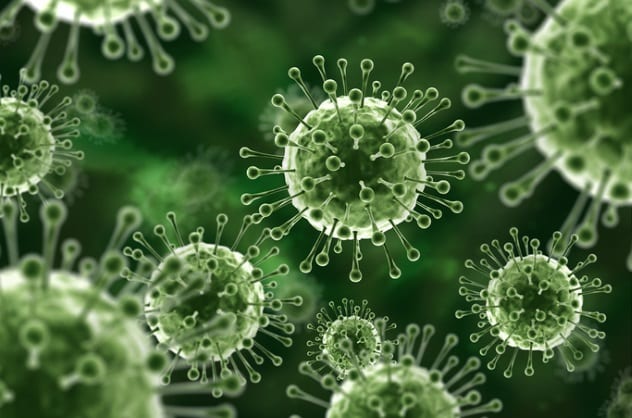
In 2015, 69-year-old Tom Patterson was diagnosed with pancreatitis (inflammation of the pancreas) while visiting Egypt with his wife. Conventional treatment did not work, and he was later flown to Frankfurt, Germany. Doctors drained the fluid around his pancreas to discover he was infected with drug-resistant Acinetobacter baumannii bacteria.
Patterson was later flown to Thornton Hospital, San Diego, California, where a drain was inserted around his pancreas to control the dripping. Unfortunately, the drain slipped, and the fluid leaked into his abdomen and bloodstream. Patterson soon started experiencing high fever, serious pains, and breathing difficulties. He also fell into a coma that lasted for about two months.
Doctors settled for bacteriophage therapy as a last-ditch effort to save his life. Unlike what the name suggests, bacteriophages are viruses and not bacteria. The name means “bacteria eater” and refers to a distinct class of viruses that attack bacteria. Every bacterium has a bacteriophage that has evolved to use it to replicate.
Bacteriophage therapy refers to the use of these bacteria-attacking viruses to cure bacterial infections. It was the go-to method of dealing with deadly bacteria until antibiotics came along. However, its results are not scientifically proven.
Nevertheless, the therapy worked, and Patterson was slowly recovering from the coma—until the A. baumannii bacteria mutated and developed resistance against the virus. Doctors solved this problem by passing a newer strain of the virus into Patterson’s body until he was finally cured.[6]
4 Maraba Virus
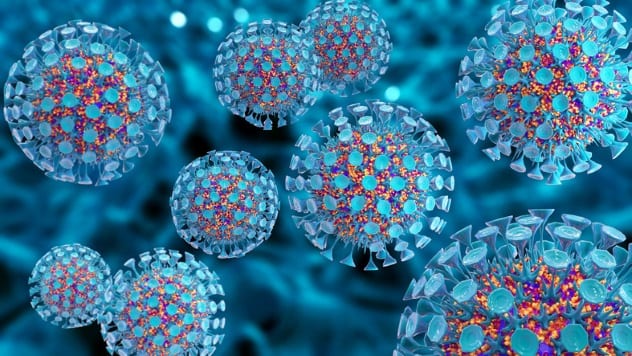
Scientists have always known that the Maraba virus (aka MG1 virus) attacks and destroys cancer cells. However, scientists at the Ottawa Hospital and the University of Ottawa have discovered that the Maraba virus also attacks and destroys HIV-infected cells.
HIV works by infecting and rapidly multiplying in the immune system cells of its hosts. However, some HIV-infected cells turn dormant after some time, while others continue to reproduce.
Doctors often administer antiretroviral drugs to suppress HIV. However, the drugs only work on active HIV-infected cells and have no effect on the dormant cells. The dormant cells kick into action and begin to rapidly reproduce when the patient stops taking the antiretroviral drugs.
Lab tests have proven that the Maraba virus will destroy dormant HIV-infected cells, indicating a possible cure for HIV. However, the procedure is considered inconclusive since tests have only been conducted in the lab, and this method has not been tested on animals or humans.[7]
3 Coley’s Toxin Treatment
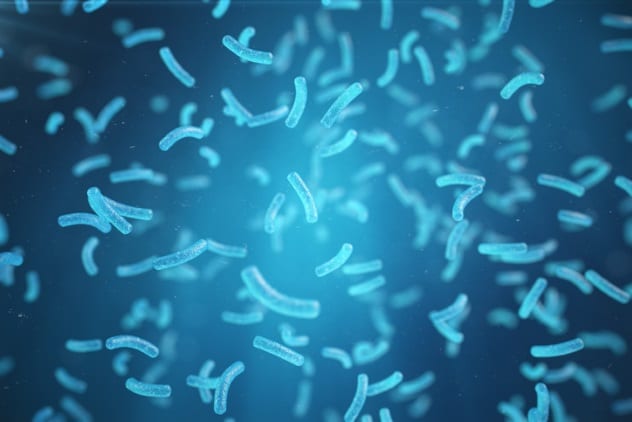
Coley’s toxin treatment involves use of bacteria to treat cancer. The procedure is named after William Coley, a New York bone surgeon who developed it in the 1890s. Coley invented the treatment after observing that patients who get infected with bacterial diseases while recovering from cancer surgeries were often better off than uninfected patients.
Coley believed this happened because the bacterial infection strengthened the patient’s immune system. So he began injecting live bacteria into his cancer patients. He later switched to using dead bacteria, given that live bacteria could still cause deadly infections.
Scientists do not agree on how the process works. Some think the injected bacteria strengthen the immune system against cancer cells. Others think the bacteria actually encourage the production of either a protein called interleukin 12 (IL12) or tumor necrosis factor (TNF) proteins that fight cancerous cells. Another group think it’s high fever that kills the cancerous cells, just like the pyrotherapy procedure we mentioned earlier.
Nevertheless, Coley’s toxin treatment had mixed results. It worked with some patients but did not work with others. However, it was widely used until the early 1950s, when it was displaced by other cancer treatments like chemotherapy. An improved version utilizing genetically modified bacteria is still used today.[8]
2 Predatory Bacteria
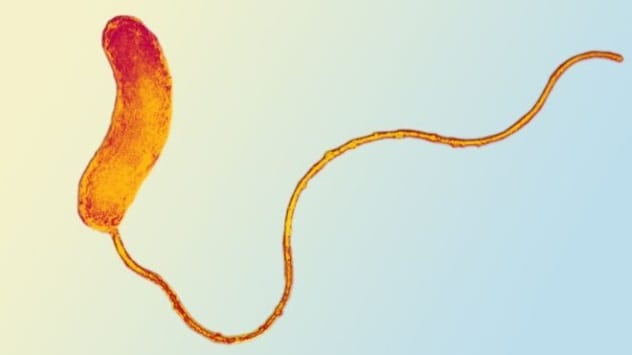
Predatory bacteria are those that attack and eat other microorganisms. Predatory bacteria work by attacking and breaching the walls of enemy bacteria cells. Once inside, it eats the bacterium’s innards before reproducing and leaving to attack other, similar bacteria cells.
Scientists are already working on using predatory bacteria to treat other bacterial infections, especially superbugs that have become immune to regular antibiotics.
In November 2016, the BBC reported that scientists at Imperial College London and the University of Nottingham had successfully used the Bdellovibrio bacteriovorus predatory bacteria to kill Shigella, a deadly genus of bacteria that causes food poisoning and kills over a million people a year.
Scientists observed Shigella populations reduce by 4,000 times after exposure to B. bacteriovorus in the lab. Another test in fish larvae saw the survival rate of the larvae infected with Shigella increase from 25 percent to 60 percent. Scientists plan on testing B. bacteriovorus on other deadly human bacteria, including Salmonella and E. coli.[9]
1 CAR-T Therapy
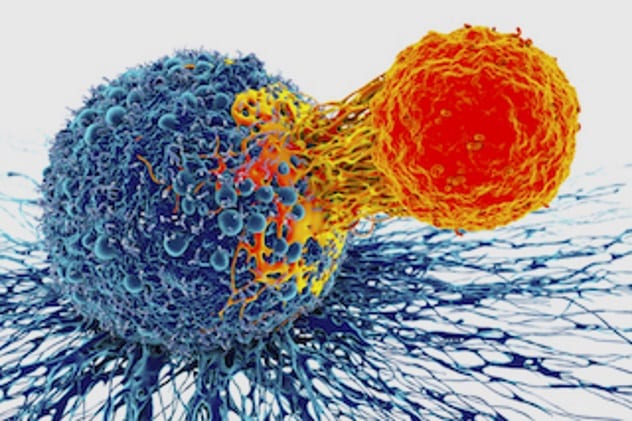
T-cells play a vital role in the body’s immune system. Recently, scientists have developed a method of using the T-cells to create chimeric antigen receptor T-cell therapy (CAR-T therapy), an anticancer treatment.
CAR-T therapy works by extracting the natural T-cells in the body and programming them with chimeric antigen receptors, which greatly improve their ability to detect, bind to, and destroy cancerous cells. The genetically modified T-cells are tailored to target the specific cancer affecting the patient, making them the perfect cancer cell assassins.
However, CAR-T therapy is only used as an option of last resort because it can cause a myriad of side effects, including brain inflammation. The process is also time-consuming, since the T-cells need to be tailored to the patient. The entire procedure could take four months.[10]
Read about more bizarre medical treatments on 10 Strange Creepy-Crawly Medical Treatments That Actually Work and 10 Medical Treatments You Won’t Believe are Still Used.








